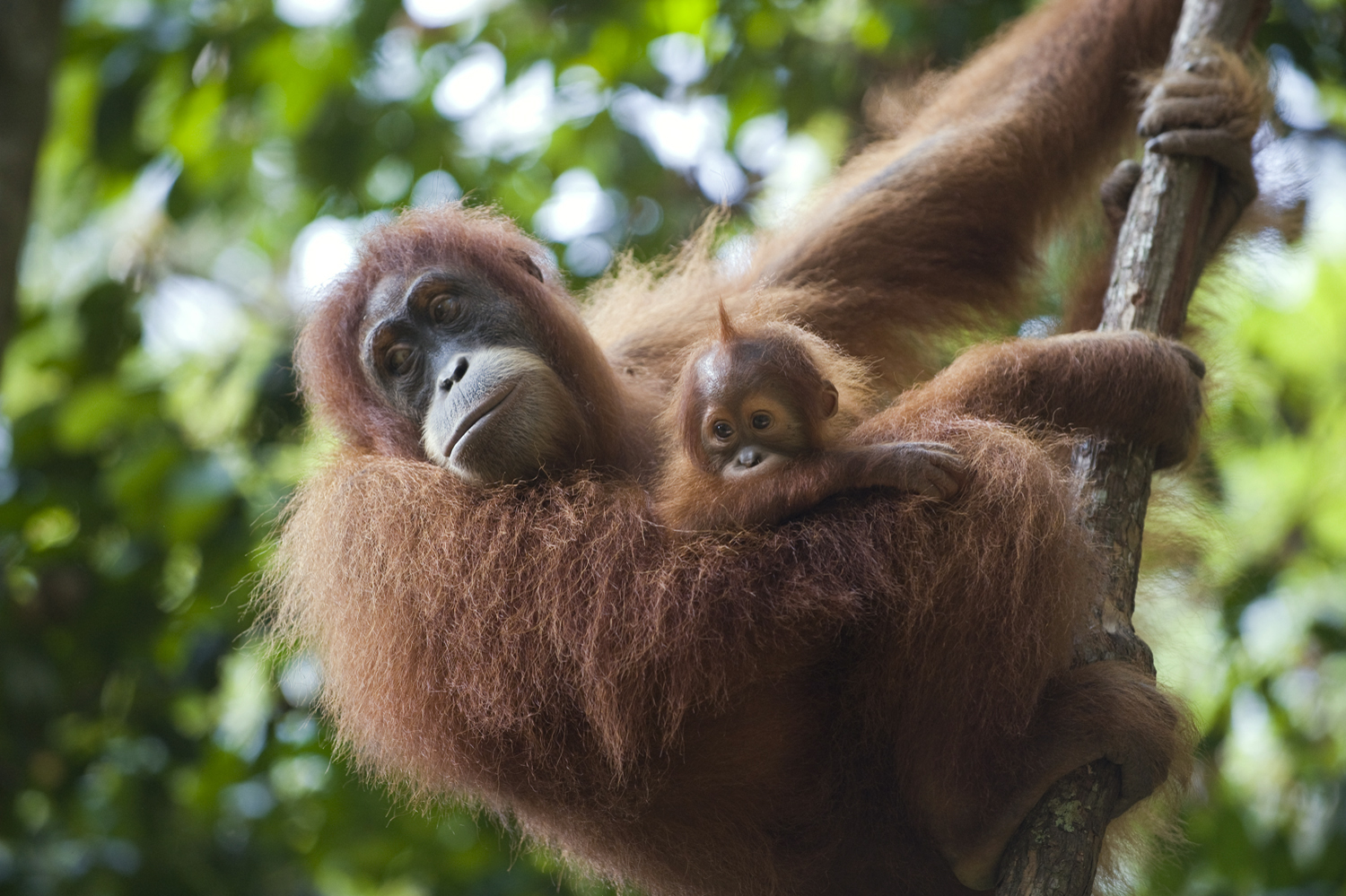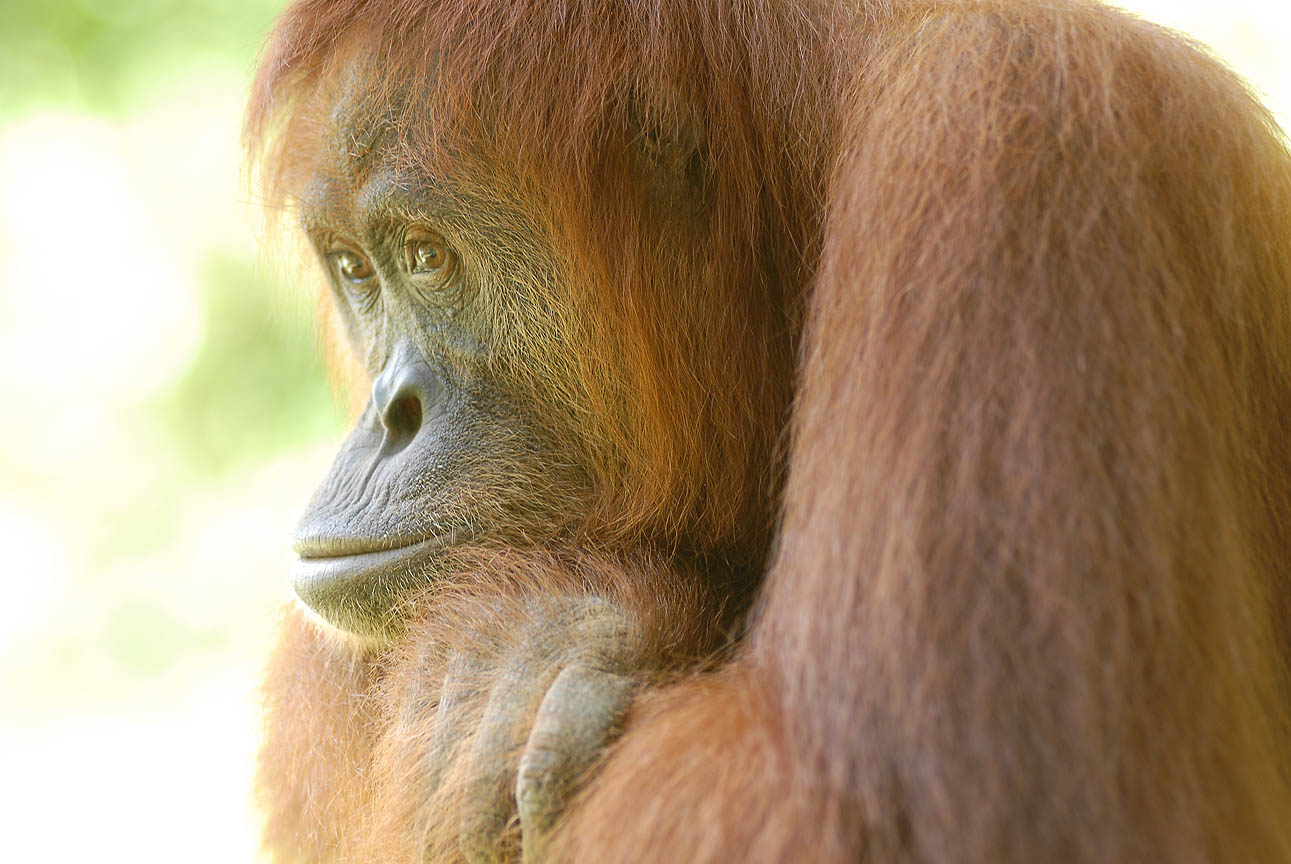
Photo credit: Suzi Eszterhas
Baby talk is a nearly universal phenomenon among humans. Speaking to infants in a high-pitched voice with exaggerated pronunciation seems to come naturally to us. This helps babies learn language and form relationships. However, baby talk is not found among our closest primate relatives.
In a new study, researchers observed five species of great apes—humans, bonobos, chimpanzees, gorillas, and orangutans—to see how they communicate with their young in the wild. They were surprised to find very little infant-directed vocal communication among non-human apes.
In fact, due to the low levels of infant-directed communication, it wasn’t possible to examine whether non-human apes alter their pitch and tone like humans. So, how do young apes learn to communicate? Mostly through indirect listening—simply hearing the sounds and vocalisations around them.
This “infant-surrounding” communication was observed at similar levels across non-human apes, with one exception: orangutans. Due to their more solitary nature, baby orangutans experience five times less surrounding vocal communication.
Interestingly, apes do use gestures with their infants in ways that mirror humans communication with babies. Exploring the role of gestures in great apes could provide valuable insights into the origins of baby talk.
References: Franziska Wegdell et al. (2025) The evolution of infant-directed communication: Comparing vocal input across all great apes. Sci. Adv.11, eadt7718
You can help protect Sumatra's Orangutans. Click to get updates
